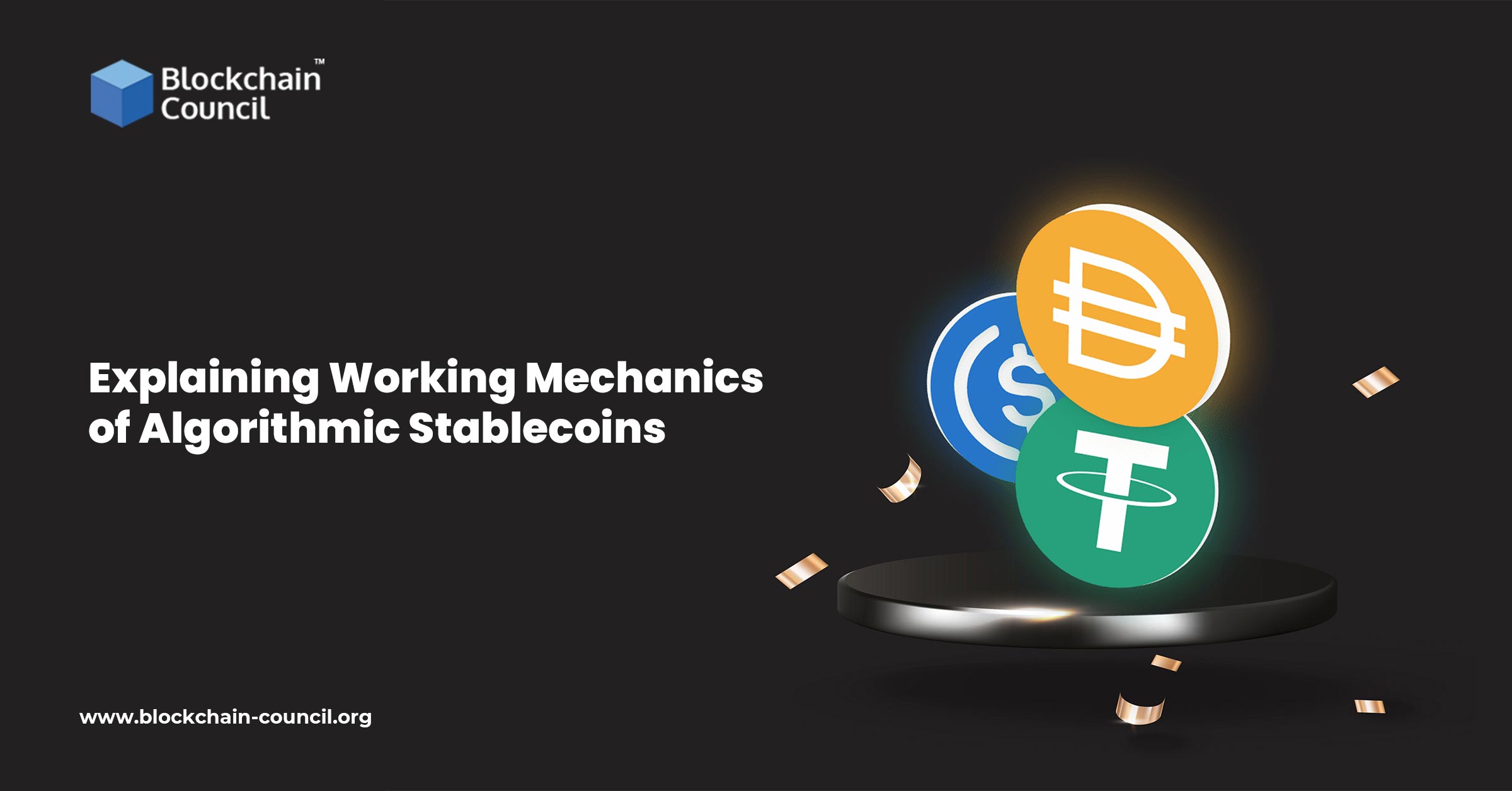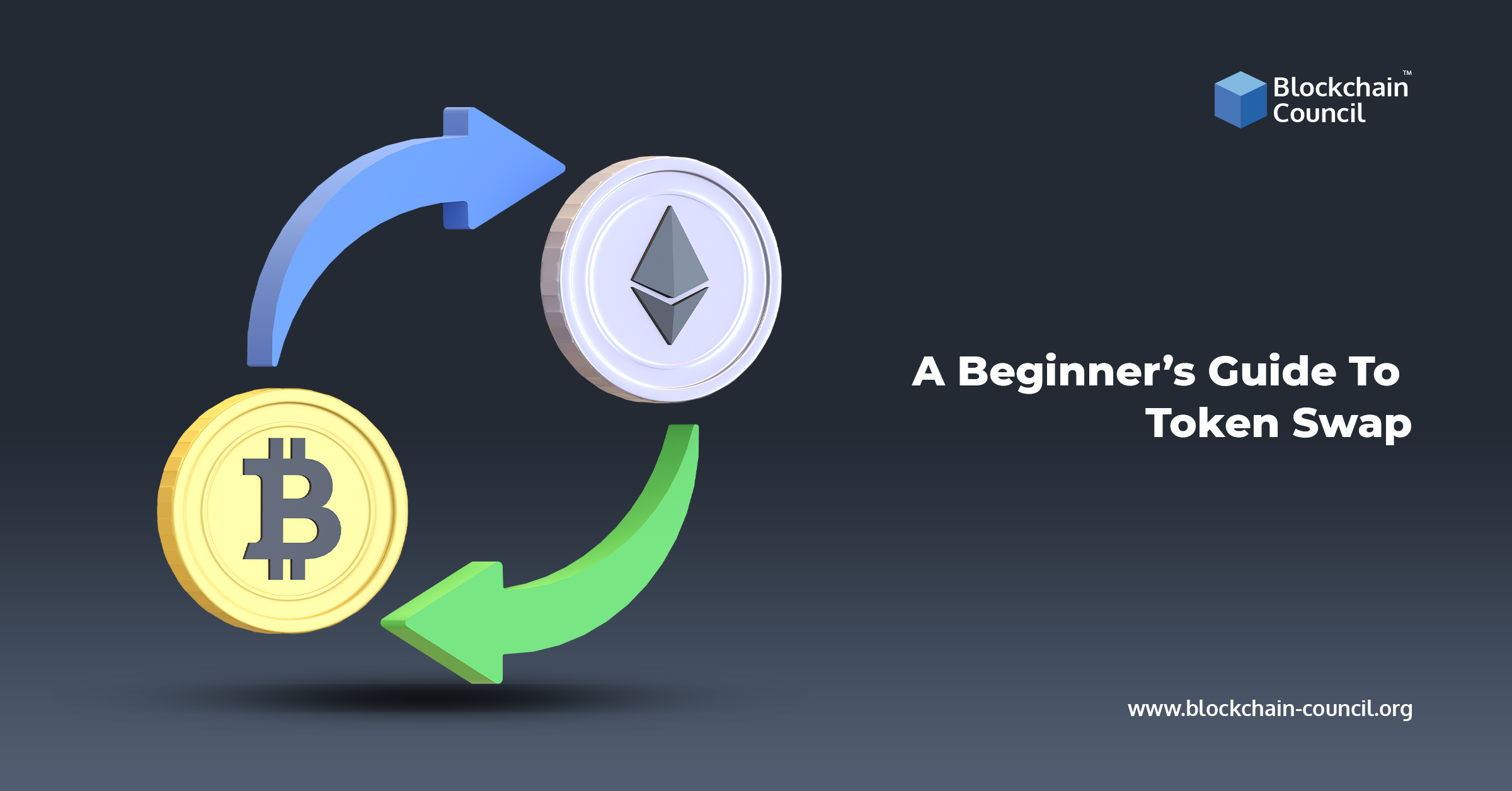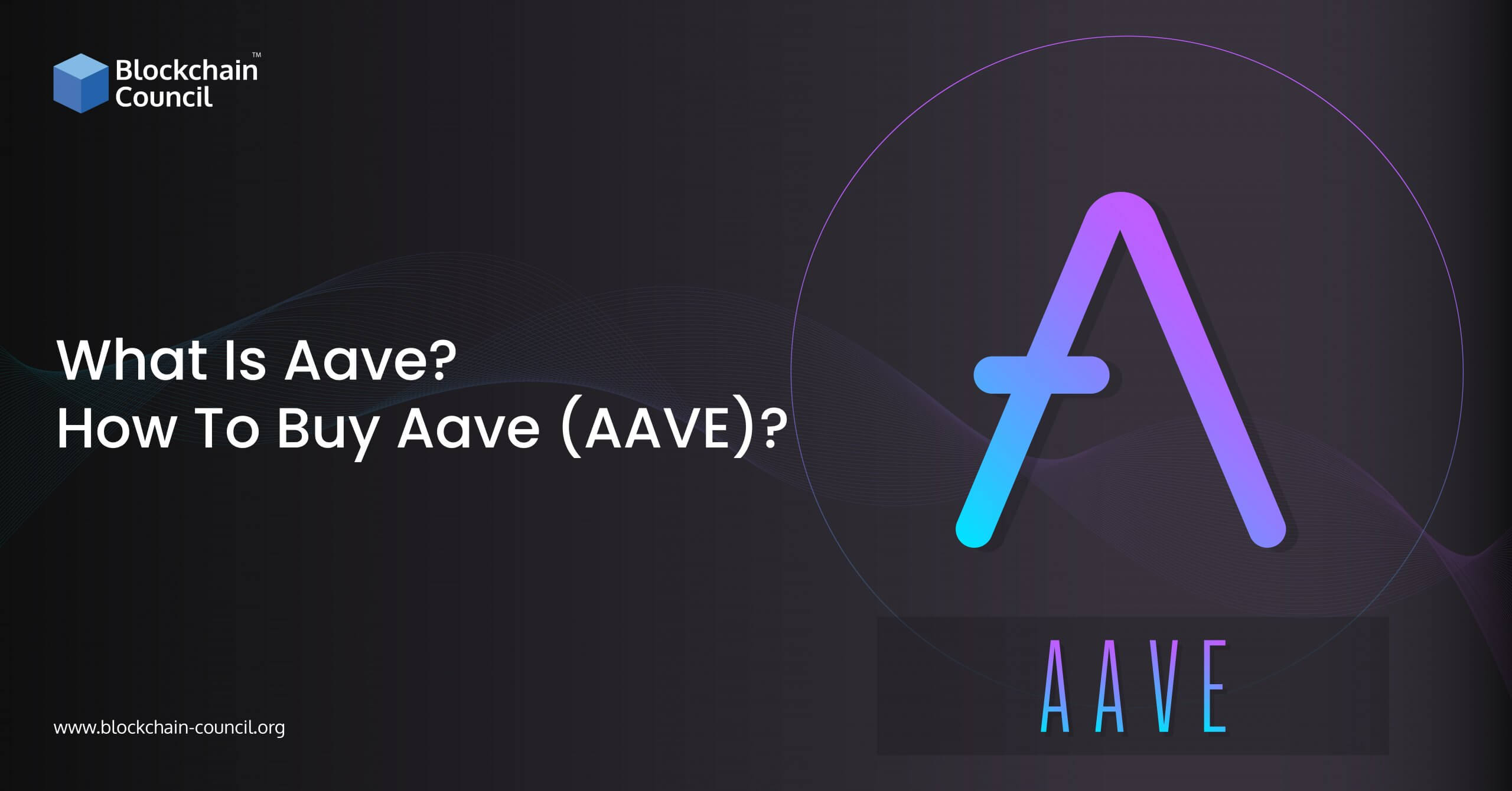
- Blockchain Council
- January 16, 2025
Cryptocurrencies are notorious for their price fluctuations; they may swing by double figures. Stablecoins, on the other hand, attempt to get a haven for individuals who wish to avoid continual instability while remaining in the cryptocurrency world. Cryptocurrencies called stablecoins are designed to be tied to fiat currencies such as the US dollars. Stablecoins tied to the US dollar are designed to have a constant price of $1.
The manner in which each stablecoin initiative keeps the peg varies. For example, tether (USDT) and Circle’s USDC are “over-collateralized” by fiat reserves, meaning they have money or cash-equivalent securities in their reserves.
As a result, each UST or USDC sold in the cryptocurrency space is secured by the stablecoin issuers’ genuine holdings MakerDAO’s stablecoin DAI is decentralized yet overcollateralized, and its smart contracts are protected by ether (ETH).
Meanwhile, algorithmic stablecoins, including TerraUSD (UST), Frax (FRAX), Magic Internet Money (MIM), and Neutrino USD, have made their market debut last year. These are new versions of stablecoins that vary in their collateralization (USDN).
They’re dubbed algorithmic as they’re backed by an on-chain algorithmic system that enables for supply and demand changes between them (the stablecoin) and another crypto that keeps them afloat.
The algorithmic tango is executed by UST, a stablecoin, and terra (LUNA), Terra’s native crypto that reflects the stablecoin, on the Terra blockchain technology, which operates the biggest algorithmic stablecoin network.
Algorithmic stablecoins are frequently undercollateralized, meaning they lack separate commodities in reserve to support their stablecoins’ worth. In reality, the terms “undercollateralized stablecoins” and “algorithmic stablecoins” are frequently confused.
What are Algorithmic Stablecoins?
Algorithms may be a perplexing term. However, it merely refers to a systematic collection of instructions for a procedure. Everything you see on your Facebook newsfeed, for example, is controlled by Facebook’s chronology algorithms, which consider factors including how appropriate a message is to you depending on your previous online behavior.
An algorithm is a piece of systematic protocols on the blockchain that is recorded in a series of smart contracts in cryptography. The algorithm (or the smart contact) manages the interactions between different coins in algorithmic stablecoins. A stablecoin and another stablecoin backing cryptocurrency support the algorithmic stablecoins.
Cryptocurrencies, like all market assets, including homes or equities, fluctuate in value based on market demand and supply. Stablecoins are included in this list since they are essentially cryptocurrencies that are freely exchanged on the crypto market.
According to Cryptocurrency expert advisors, algorithms govern supply and demand to keep the price of a stablecoin from depegging (moving away from $1) while susceptible to market factors. When there is too much want for an item but not enough supply, the price rises — and vice versa. The algorithm’s objective is to monitor the fluctuation and keep it under control.
How Do They Work?
Stablecoins are divided into two categories: those supported by deposits consisting of commodities like Fiat currency, bonds, commercial paper, or even other crypto tokens, and those that are algorithmic or decentralized.
Tether, USD Coin, and Binance USD are reserve-backed stablecoins that happen to value sufficient dollar-denominated assets to sustain a 1:1 exchange rate. A few of the firms’ stablecoins may always be traded for one dollar.
Asset-backed stablecoins are already under scrutiny in the past few years for failing to be honest about their holdings and whether they have enough funds to securely store all of the virtual currency in circulation.
TerraUSD, on the other hand, is an algorithm stablecoin leading to no reserves. Instead, a complicated protocol involving swapping TerraUSD coins with an open cryptocurrency called Luna is responsible for keeping its worth and managing supply.
How Important Are They?
According to cryptocurrency trading statistics, stablecoins have a market valuation of roughly $170 billion, constituting them a small portion of the broader crypto space, which is now worth around $1.2 trillion.
However, in recent times, stablecoins have garnered much more attention. Tether, the strongest stablecoin, has a market worth of about $80 billion, rising from $4.1 billion just at the beginning of 2020. The second most valuable stablecoin, USD Coin, has a current value of $49 billion.
Although statistics on the precise applications of stablecoins are not easily available, however, they are critical for market participants as it enables them to hedge against price fluctuations in bitcoin or keep excess funds without converting them to conventional money.
The US Federal Reserve stated in one of its recent reports that stablecoins are rapidly being used to promote aggressive investing in other digital currencies.
Stablecoins have become more popular in global commerce and as a tool to evade capital controls since 2018, according to Joseph Edwards, head of the finance strategy at crypto business Solrise. He claims that the stablecoin Tether is particularly used for trading in and around China and South America.
What Could Possibly Go Wrong?
Shareholders lost trust in Luna recently, and TerraUSD’s stability mechanism ceased operating as a result. As a result, the price of TerraUSD plummeted to as low as 30 cents. In such circumstances asset-backed stablecoins are expected to stay strong.
Tether, on the other hand, decoupled from the dollar for the very first time since 2020 on Thursday, i.e., May 12, falling as low as 95 cents. Tether attempted to comfort traders by stating on its web page that shareholders may still exchange their coins at the 1:1 ratio.
What Do Regulators Suggest?
Since regulators across the world are working on setting regulations for the cryptocurrency industry, some of them believe that stablecoins can be a specific threat to economic security, such as if a large number of users seek to trade out their stablecoins at the same time.
So even though stablecoins are supported by commodities that might lose value or become inaccessible in adverse market conditions, they are still vulnerable to investors’ end. Moreover, according to a report, a move on the stablecoin might cause stress on the conventional financial system, causing it to bleed over into the payment ecosystem.
How is UST supposed to keep its peg??
Through an algorithmic link with Terra’s native coin, LUNA, TerraUSD (UST) preserves – or is required to retain – its 1:1 parity with the US currency. In addition, an arbitrage option backs the connection whenever UST drops its peg in either direction.
Only when supplies of UST are insufficient, and demands are excessive the value of UST rises over $1. Consumers can trade 1 USD of LUNA for 1 UST at the Terra station gateway to return UST to its peg via the Terra protocol. This transaction consumes 1 USD of LUNA and creates 1 UST, which customers may trade for 1.01 USD and make a penny as a profit. That might not seem like much, although when undertaken in massive volumes, these earnings add up.
Customers can generate quite a lot of UST since they need from burning LUNA until the price of UST falls below $1. The rationale seems to be that as supply grows, the price would ultimately fall.
When there is too much supply and not enough demand, the converse occurs: UST’s price falls under $1. As a result, the protocol enables consumers to purchase 1 UST for 0.99 USD and then swap it for 1 UST for 1 USD of LUNA. The arbitrage trader generates revenue of 0.01 UST by eliminating 1 UST and issuing 1 USD of LUNA.
The Terra protocol, once again, enables consumers to consume UST and get LUNA indefinitely until UST hits $1.
The other scenario in which the value falls underneath the peg is a more regular issue for algorithmic stablecoins since market worry is more prevalent than market exhilaration, leading to more incidences of lesser demands and more supplies.
Because of UST’s algorithmic link with LUNA, the latter must withstand the former’s volatility. Because novel LUNA may be created indefinitely whenever UST falls under $1, the price of LUNA can fall precipitously in the context of rising token supply.
Do Kwon, the CEO of Terra inventor Terraform Labs and the key person behind UST, formed the Luna Foundation Guard in February 2022 due to higher complaints that the stablecoin is fragile since it lacks an external supporting system – independent collateral holdings. The purpose of setting up Luna Foundation Guard is to maintain the stablecoin’s peg. In addition, it has – or had – an aim of purchasing up to $10 billion in bitcoin (BTC) to keep the currency going.
How Did UST Depeg?
On May 7, UST started depegging when Terra’s major decentralized finance (DeFi) system, Anchor, began accepting large-volume transactions. In addition, the UST pool on Ethereum’s Curve Protocol, the key center for stablecoin pricing in all of DeFi, witnessed high-volume transfers as a result of these events.
Many believe UST’s depegging was the result of concerted action. Others believe it was a wave of panicked withdrawals triggered by the deteriorating global market circumstances, particularly the value of bitcoin, which LFG (Luna Foundation Guard) has contributed to its reserve to support UST. In either scenario, the stablecoin has been unable to withstand the pressure and has fallen as weak as $0.29 on May 11.
Some experts believe that the fact that LFG, the corporation that protects UST’s peg, had so much bitcoin in reserve accelerated its price drop because many feared the group might unload billions of bitcoin. This is a double hit, though: The LFG has much less ammunition implying to the decreasing value of bitcoin.
What are Some Algorithmic Stablecoin Examples?
USDD
A Tron ecosystem decentralized stablecoin created in May 2022 by Tron founder Justin Sun.
UXD
On the Solana blockchain, UXD is an algorithmic stablecoin backed 100 percent by a delta neutral position.
Ampleforth (AMPL)
It is a rebasing algorithmic stablecoin that is tied to the CPI-adjusted 2019 USD.
Basis Cash (BAC)
The stablecoin Basis Cash (BAC) uses a three-token seigniorage method to keep its 1 USD peg by using shares and bonds.
Closing Thoughts
While algorithmic stablecoins appear to be a good idea in principle, they still have a long way to go before they can be regarded as reliable stores of value. No algorithmic stablecoin has succeeded in attaining a constant stable peg at the time of publishing. As a result, their target market is speculative arbitrage traders.
Algorithmic stablecoins, on the other hand, provide fertile ground for innovation. They provide chances to push the boundaries of what is possible in DeFi, bringing together a diverse and creative group of thinkers and builders who are inventing and iterating on current models.
If you aspire to become a cryptocurrency developer, then Blockchain Council’s extensive certification courses are available for you at an economical price. You need to scroll through the course that best meets your expectations.





































































 Guides
Guides News
News Blockchain
Blockchain Cryptocurrency
& Digital Assets
Cryptocurrency
& Digital Assets Web3
Web3 Metaverse & NFTs
Metaverse & NFTs
